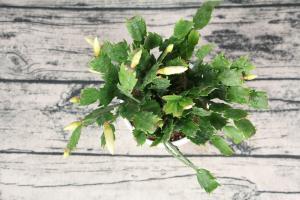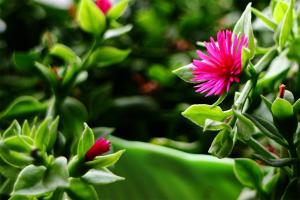Which Part of the Plant Evaporates Water?
Water is essential for the survival of plants. It is through a process known as transpiration that plants lose water to the atmosphere. Transpiration is the process by which water is absorbed by a plant's roots, transported to its leaves, and evaporated into the atmosphere. However, which part of the plant is responsible for this evaporation?
The Role of Leaves in Transpiration
Leaves are the primary site of transpiration in plants. They are instrumental in regulating the movement of water through the plant. Leaves contain tiny pores called stomata, which are responsible for gas exchange. Stomata are small openings on the surface of the leaf that allow for the exchange of gases such as oxygen and carbon dioxide.
Transpiration occurs through these stomata as water vapor diffuses out of the leaf and into the atmosphere. The rate of transpiration is affected by several factors such as humidity, wind speed, temperature, and light intensity.
The Role of the Stem in Transpiration
While leaves are the primary site of transpiration, stems also play a role in this process. Stems are responsible for transporting water from the roots to the leaves. As water moves through the stem, some of it is lost to the atmosphere through small openings called lenticels.
Lenticels are similar to stomata in leaves but are located on the stem. They allow for gas exchange and also play a role in transpiration. However, the contribution of stems to overall transpiration is relatively small compared to leaves.
The Role of Flowers and Fruits in Transpiration
Flowers and fruits are also involved in transpiration, although to a lesser extent than leaves and stems. While they do not have stomata or lenticels, they still lose water to the atmosphere through their surface. This process is known as cuticular transpiration.
Cuticular transpiration occurs through the waxy layer on the surface of flowers and fruits called the cuticle. This layer helps to prevent water loss, but some water is still lost to the atmosphere through diffusion.
Conclusion
In conclusion, leaves are the primary site of transpiration in plants. Stomata on the leaf surface are responsible for the majority of water loss to the atmosphere, while stems and other parts of the plant contribute to a lesser extent. It is through this process of transpiration that plants are able to survive and thrive in their environment.

 how many times do yo...
how many times do yo... how many planted tre...
how many planted tre... how many pine trees ...
how many pine trees ... how many pecan trees...
how many pecan trees... how many plants comp...
how many plants comp... how many plants can ...
how many plants can ... how many plants and ...
how many plants and ... how many pepper plan...
how many pepper plan...































